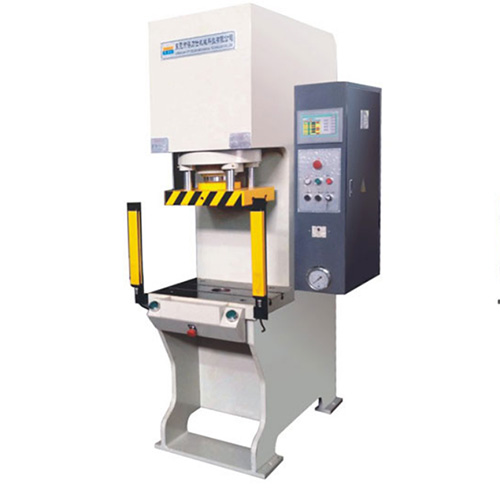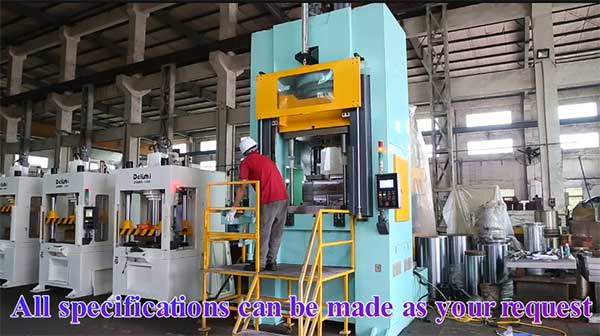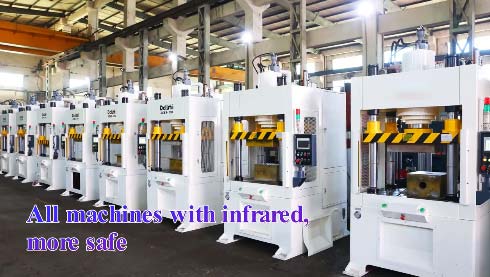
The hydraulic press uses the principle of Pascal’s law. It utilizes the power of fluids for the operation. Usually, there will be three important parts in a hydraulic press;

Despite their many uses and advantages, hydraulic presses present major safety risks for employees—especially when used incorrectly. This is why it’s vital to integrate proper safety solutions across your press operations to minimize the risks associated with these powerful machines.

A hydraulic press is a very important mechanical device that is used for different types of industrial applications.

There many benefits that come with investing in quality products. Whether it is a wear part or a machine, you get to enjoy numerous benefits if you buy the best quality. What if you invest in the best quality hydraulic press machine? Well, there are numerous benefits that you will get from it.

Hydraulic presses designed for jewelry makers and metalsmiths are specifically sized for finer, more detailed work on small pieces of jewelry dies

C-frame presses are a commonly used type of hydraulic press. These presses get their name from the fact that the press itself is shaped like the letter “C”, however the press may be referred to by other names such as “gap-frame press”.

4 Post Hydraulic Press,Four Post Hydraulic Press,Deep Drawing Hydraulic Press.4-post hydraulic presses, also known as 4-column presses, can be designed to accommodate dies of any size and are well suited for part manufacturing that requires superior rigidity and precise bed-to-ram parallelism.

At present, cold extrusion technology has been widely used in fasteners, machinery, instrumentation, electrical appliances, light industry, aerospace, shipbuilding, military and other industrial sectors, and has become an indispensable important processing tool in metal plastic volume forming technology

Our quality C-frame presses deliver consistent performance – even with the toughest of metal-forming and assembly applications. Typically, a C-frame press is designed to take up less floor space than other metalworking machinery. At the same time, they provide minimal stroke deflection.

Deep drawing is one of the most popular metal forming methods available to manufacturers–it involves the use of metal dies to form blank sheets of metal into a desired shape. Specifically, if the depth of the item created is equal to or greater than its radius, then the metal forming process can be called deep drawing.

There are many production methods available for metal forming. Hydraulic presses can be used for compaction, assembly, stamping, forming, embossing and stretching. Customized hydraulic presses can provide versatility in stroke length, mold space and pressure functions, while other production methods (such as mechanical presses) cannot.

Joseph Bramah invented the hydraulic press in 1795. Sometimes, it is called the Bramah press. Leading up to this invention, Bramah first invented the flush toilet, then began studying fluids. This lead to his study of Pascal’s law, also known as Pascal’s principle. This is a principle of fluid dynamics that states that when pressure changes anywhere in a confined space of fluid that cannot be compressed, that same pressure change will be transmitted throughout the whole space.

There are many potential pitfalls to take into account when selecting your hydraulic press.

Now it’s time to determine which type of hydraulic press machine is best for your particular application. Open-gap presses provide easy access from three sides. 4-column presses ensure even pressure distribution. Straight-side presses offer the rigidity required for off-center loading in progressive die applications

Today's hydraulic presses are faster, more reliable than ever and can do a wide variety of jobs within their tonnage range to provide excellent versatility. Hydraulic presses are also uncomplicated, and can have significant cost advantages over mechanical presses in comparable sizes. Moving parts are few, and they are fully lubricated in a flow of pressurized oil. These parts are usually standard, affordable, off-the-shelf components and are also relatively easy to replace. This means more up-time and lower maintenance costs. Hydraulic presses also provide easy tonnage adjustment and more tonnage control throughout the presses’ stroke, expanding your application possibilities. If you decide to go hydraulic, here are some key factors to consider when selecting and buying your press.